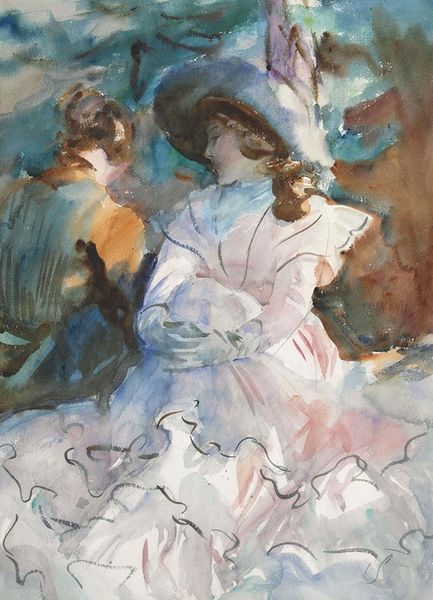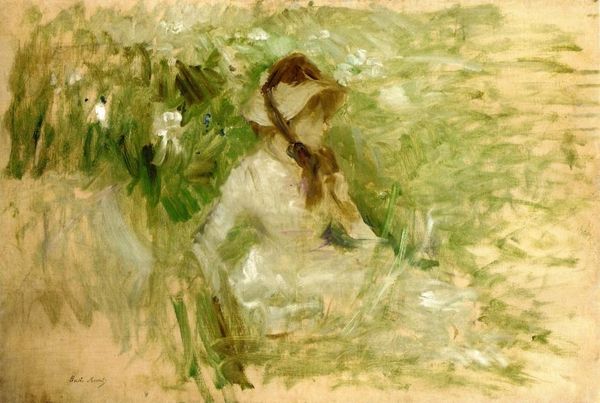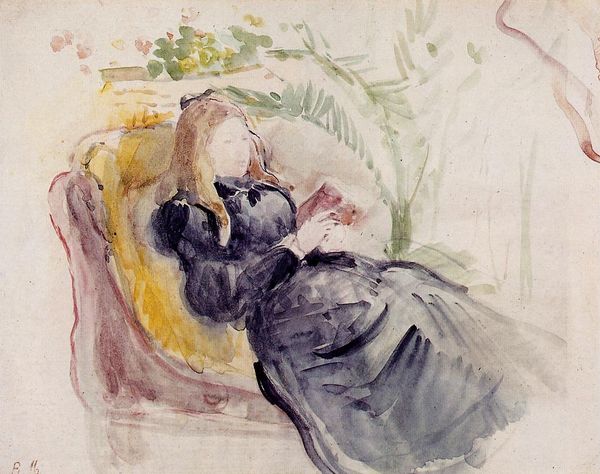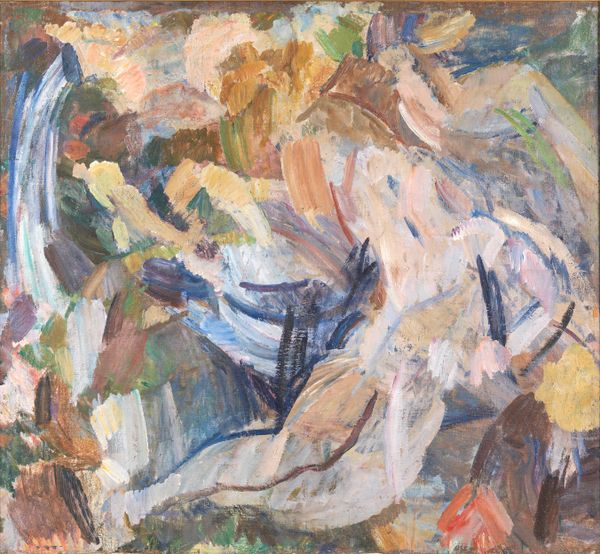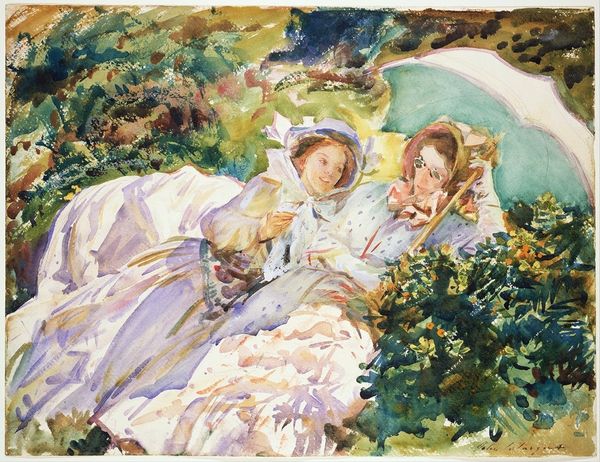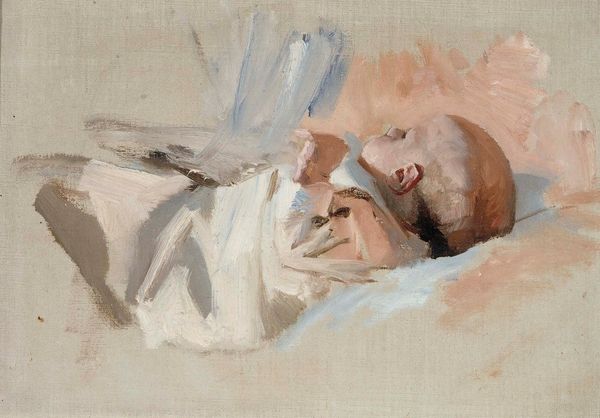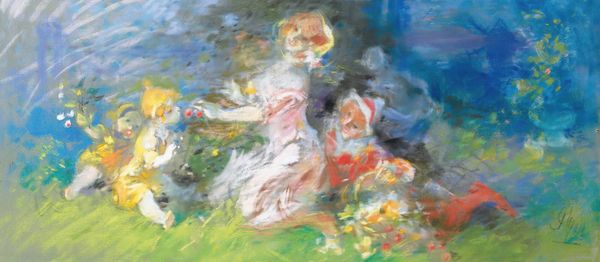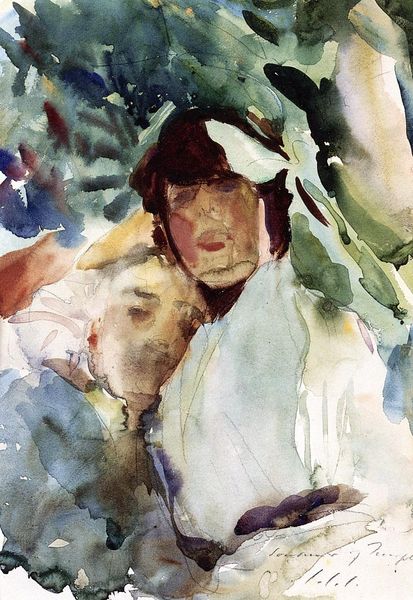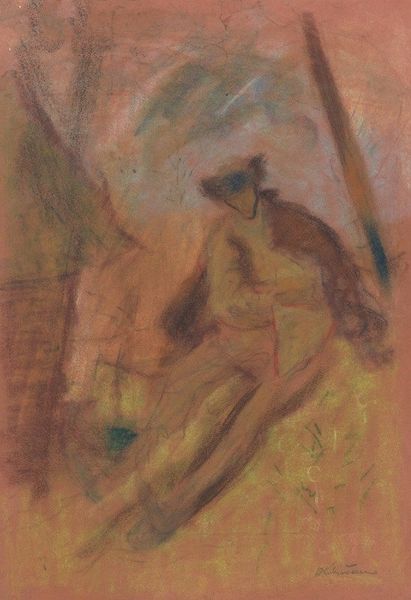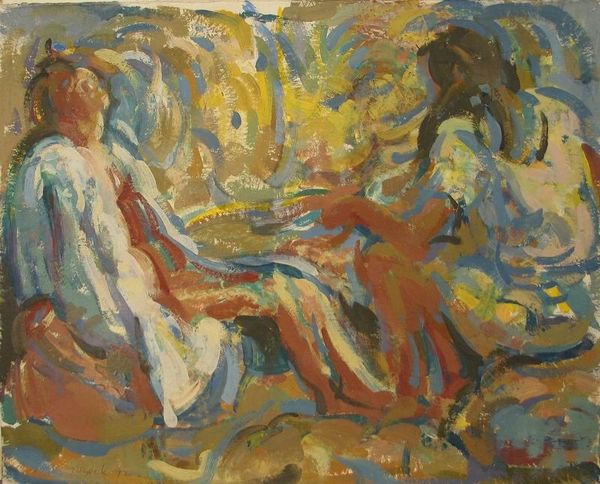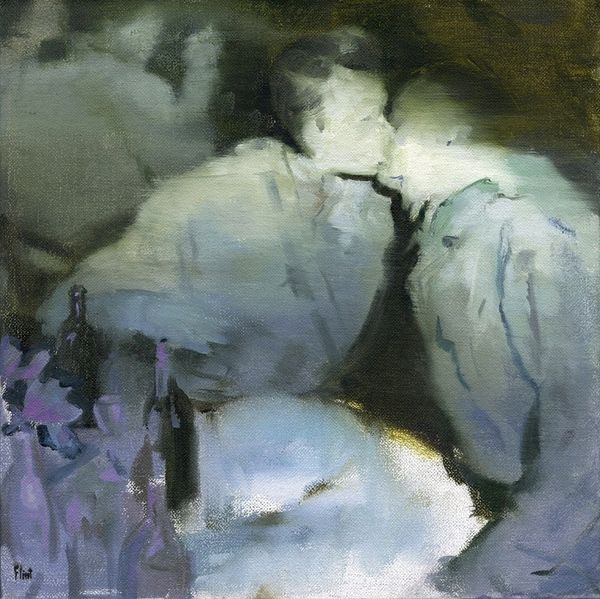
Copyright: Public Domain: Artvee
Curator: What a radiant image! John Singer Sargent painted this watercolor between 1905 and 1915, titling it "Simplon – Mrs Barnard and her Daughter Dorothy." Editor: It evokes a fleeting moment of tranquility. The dappled sunlight, the soft brushstrokes… it almost feels like we’re intruding on a private scene. Curator: Sargent, an expatriate American artist, demonstrates in this work an intuitive grasp of the subtle interplay of light and form, the hallmarks of impressionism, but the figuration remains central. Notice the mother’s white dress, seemingly painted with light itself, mirroring innocence, leisure, and privilege of the white bourgeois during La Belle Époque. Editor: I see that tension between beauty and its cultural context. This painting celebrates an idealized image of motherhood and bourgeois domesticity, which might need questioning. Sargent clearly enjoyed portraying women, but to what extent did he critically engage with the era’s societal limitations imposed upon them? Curator: The symbology lies not just in the figures but in the very landscape itself. The figures, placed against the backdrop of Simplon, suggest a haven, perhaps even an arcadia. Think about what this choice of setting might evoke for its original audiences--what notions of an elite experience and lifestyle, made accessible to the increasingly mobile leisure classes. Editor: But even a 'haven' bears traces of the real world, the power structures, the unseen labor supporting such idealized scenes. We need to acknowledge that the freedom represented here was not universal. Sargent’s style softens any harsh reality; even the visible brushwork does little to counteract the feeling of effortless femininity portrayed in this period piece. Curator: You’ve raised valuable considerations. Perhaps this scene symbolizes an emotional shelter, too--that between a mother and a daughter. We often discuss how white is symbolically linked to notions of purity or goodness and motherhood but it is also the color most clearly coded as being associated with power, class and privilege during this era. These ideas may become deeply interwoven over time. Editor: Precisely, and as viewers, we must always contextualize. To look at Sargent’s skill is to understand the ways in which he navigated the complexities of identity, power, and representation through his paintings. His mastery reflects artistic achievement within its historical limits, even if its subject still remains quite loaded and problematic. Curator: Thinking about Mrs Barnard and Dorothy and reflecting on this moment reminds us to be aware and alert. I now know why this image resonates—beyond pure technique. Editor: Yes, art like this reminds us to continuously challenge what we consider aesthetically pleasing in relation to societal change and ethical considerations.
Comments
No comments
Be the first to comment and join the conversation on the ultimate creative platform.

